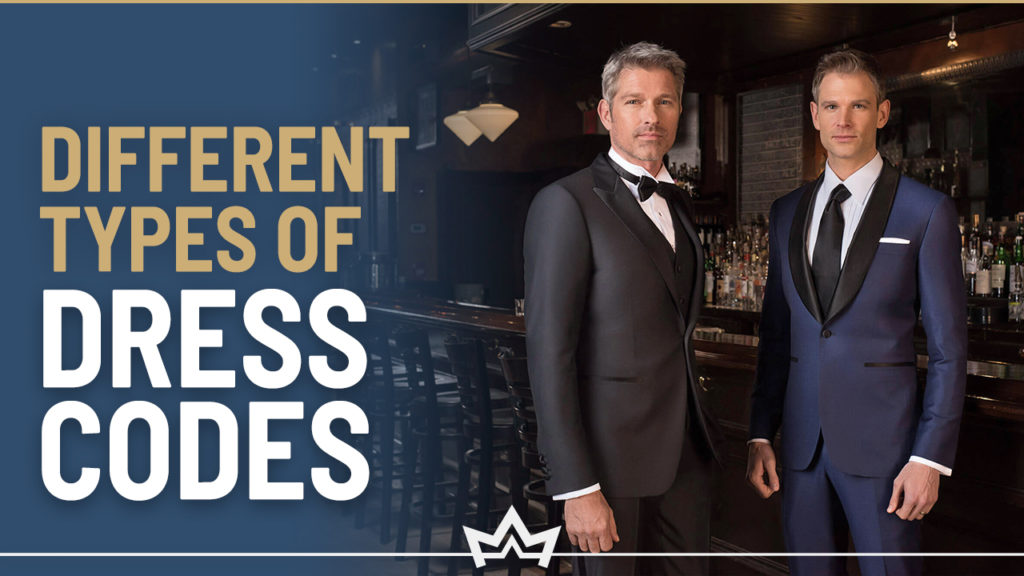A perfect fit is the most vital factor in a fantastic-looking suit.
If you are here looking to find out how a suit should fit, you must be among those who don’t want to look like they robbed dad’s closet for a suit.
It’s okay. We’ve all been there.
There are many important factors to consider, such as suit accessories, shirt, color, fabric, and shoes, when putting your outfit together.
But without a proper suit fit, all these things amount to nothing.
Basic Rules when Wearing a Suit
Most men will wear a suit at least a few times in their lives.
When you know how to properly wear a suit, you are bound to look your best.

Whether your suit costs thousands of dollars or only one hundred, knowing the fundamentals of a well-fitting suit will ensure you look put-together at all times.
Because a suit that fits well looks more stylish than an ill-fitting suit.
But if you learn a few rules about suit-wearing, you’ll always look at home in your suit.
The Bottom Button Rule
Here’s an easy rule to start with. Always keep the bottom button undone on your suit jacket.

This rule serves mainly to resolve the issue of discomfort when your bottom button is fastened.
The bottom button greatly restricts your movement when it’s closed.
Thankfully, it’s not only acceptable but expected that men open their bottom suit jacket button.
You can thank King Edward VIII from the early 1900s for this allowance.

For example, if your suit jacket has three buttons, follow these rules when standing.
- Sometimes – The top button is optional for unbuttoning or buttoning.
- Always – The middle must always be buttoned.
- Never – Don’t ever button the bottom.
The Hourglass Shape
Your suit jacket shouldn’t create a stick straight outline but should curve and slightly resemble an hourglass.
Of course, your upper body shape will impact the line of your jacket and should reflect your natural proportions.
The golden ratio of 1.6 to 1 from shoulders to waist is considered ideal for the best fit.
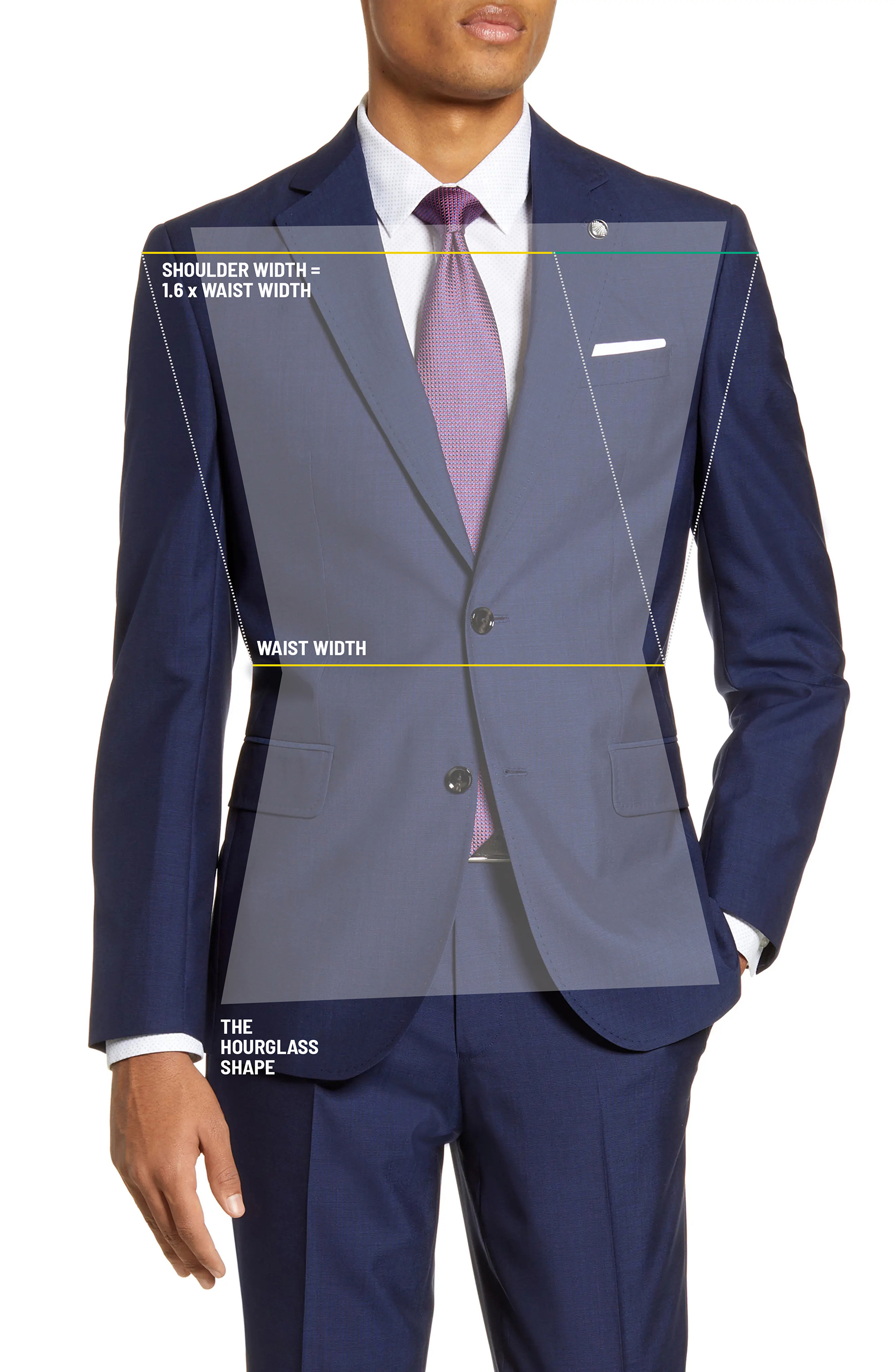
So this means your suit’s shoulders should measure 1.6 times more than its waist.
A suit that follows this ratio creates a beautifully sleek and well-proportioned silhouette.
This approach makes a flattering visual for most bodies.
Unfasten the Suit when Sitting
Always undo all suit jacket buttons when seated. You won’t be comfortable if you leave them fastened.
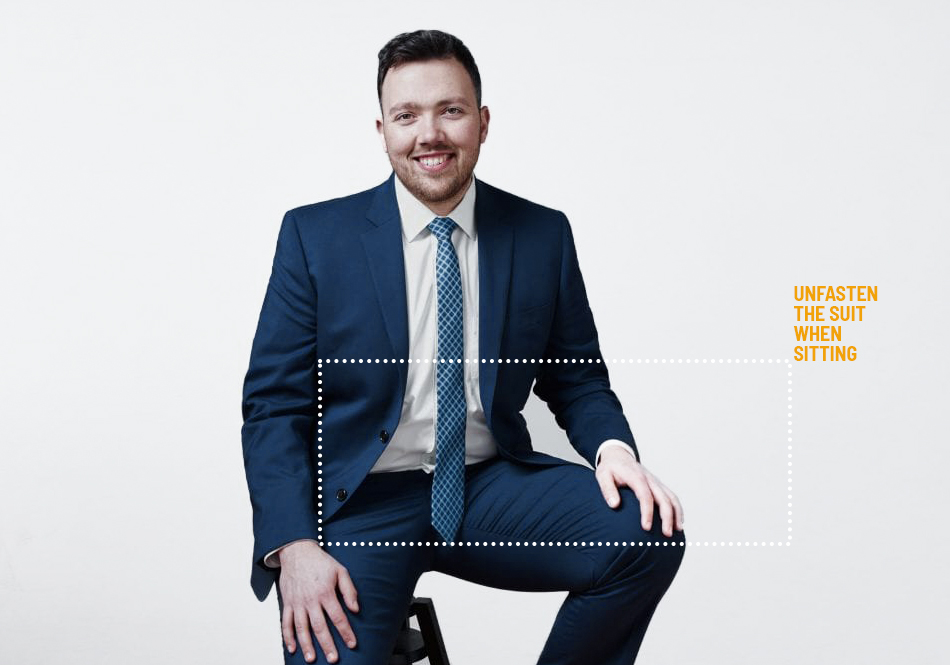
Leaving your jacket buttoned looks inelegant and embarrassing.
Unbuttoning your jacket solves both your discomfort and the problem of unsightly visuals.
However, you won’t be comfortable if your jacket is a poor fit.
How the Suit Jacket Should Fit
People naturally notice your upper half immediately since that’s where their eyes tend to fall when looking at your face.
Your suit jacket will absolutely get attention, so it better look good.
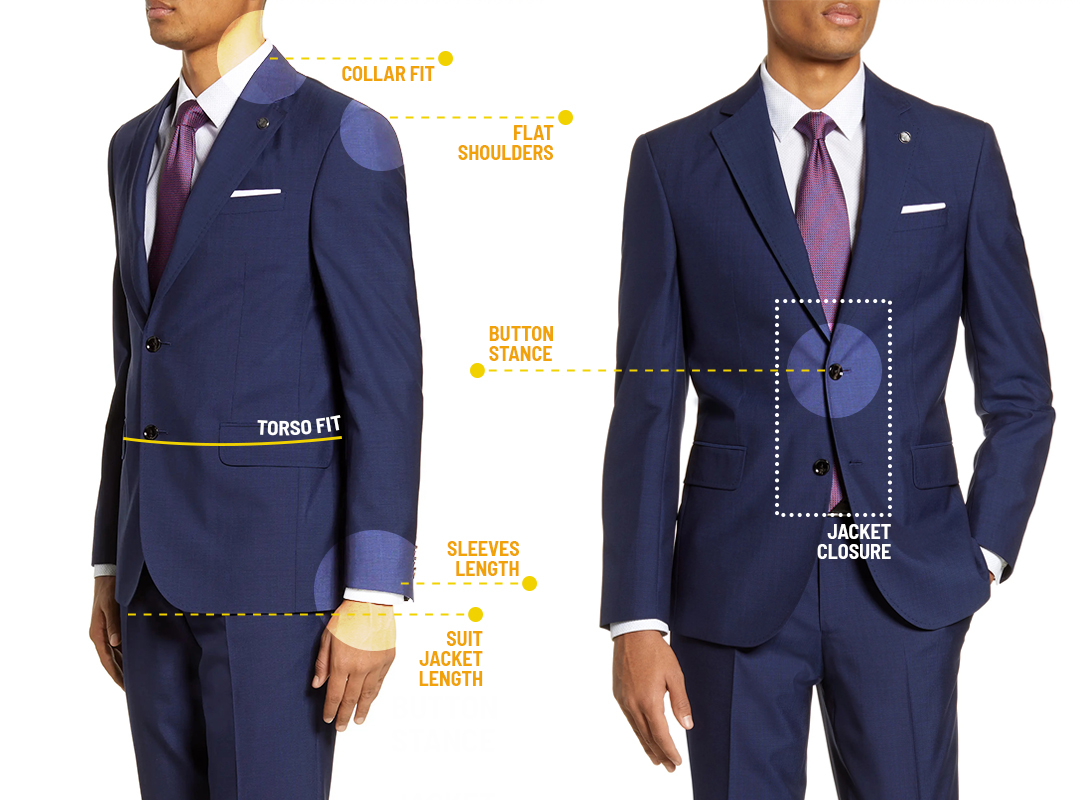
Therefore, pay close attention to specific areas for a good suit jacket fit, ensuring you make a good first impression.
Flawless Jacket Closure
For a flawless jacket closure, your buttoned jacket should be a perfect and smooth fit.
You should aim for a slightly snug feeling when you belly-button your suit jacket.

A jacket that’s too small is easy to spot because it causes unsightly lines and wrinkles in the material, extending out from the buttons.
When your jacket is too tight, the strain will pull the bottom panels apart. Instead, they should lie next to each other.
On the other hand, if it’s too large, your suit will hang limply from your body and form a saggy gap.
This is, of course, no good because an oversized suit jacket makes you look diminished.
Flat Suit Jacket Shoulders
The shoulders on your jacket directly indicate how well your suit fits.
The jacket shoulder seams must end right along the tips of your shoulder bones.
You should have no pulling or creasing; the jacket has a bad fit if the shoulders don’t lie smooth and flat.

Some men have sloped or rounded shoulders; a good fit suit can disguise that.
Many suit jackets include some padding in the shoulders, filling out this area and helping the end seam lie in the right spot.
This can also help get the right proportion for the 1.6 suit rule.
Suit Jacket Length Meets the Palm
The right jacket length is critical for maintaining proportion.

The hem of your suit jacket needs to cover your backside or fall to the top of your wrist when they are slack at your sides.
Another way to tell if your jacket is the correct length is to look at your crotch. The hem should land in the mid-crotch area.
Some jackets may be longer or shorter, but those generally aren’t a good fit.
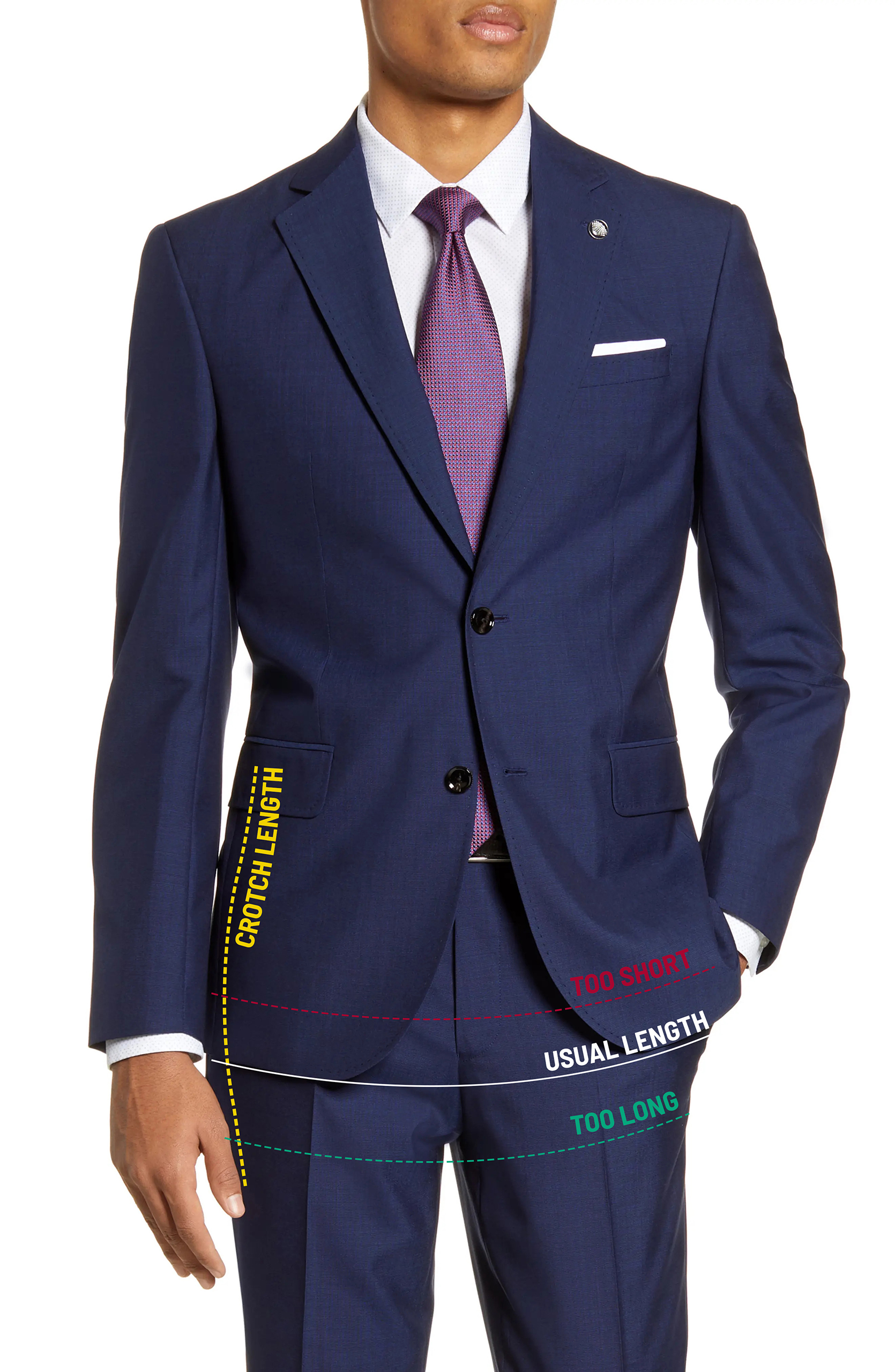
The jacket’s length can also influence how your legs look in the suit by either cutting them off or showing too much.
Jacket Sleeves Expose the Shirt
Stand with your arms hanging loosely at your sides while wearing your suit jacket and a dress shirt.
You should be able to see 1/4″ – 1/2″ of the shirt cuffs exposed under your jacket sleeve.

When you flex your wrists and bring your palms level with the floor, the cuff of your jacket should sit 1/4″ above the back of your hand.
This is a good way to double-check that you have the right jacket sleeve length.
The Jacket Collar Sits Evenly Against the Shirt
The collar of your suit jacket is meant to lie smoothly against your shirt collar for an ideal fit.
Both collars must lie flush against your neck for the full circumference.

Any gap between your neck and either collar betrays your elegant image and usually indicates a bad fit.
It means that your collar is too loose and the garment is too large overall.
You’ll instantly feel if your collar is too tight; it tugs and pulls, and you can see bunching.
A too-tight collar also makes your shirt wrinkle in odd places.
Good Torso Fit for Ideal Body Ratio
Keep your suit looking proportional with the right fit and measurements for your torso and waist.
The proper fit ensures that you have plenty of room for movement, especially in your arms.

To check your fit, button the suit jacket and slip a fist under the button at your stomach area.
The jacket is too large if you have a lot of space between these areas.
If you struggle to get your fist in between, the jacket is too small. It’s best to try a different size.
Top Button Hits above the Navel
The button stance refers to where the top button on a jacket rests.
The belly button of a well-fitted suit should be positioned directly above your navel.
It is a critical placement for a good fit appearance, and many people don’t pay enough attention to it.
The button stance determines the width of the “V” shape created by your jacket’s lapels.
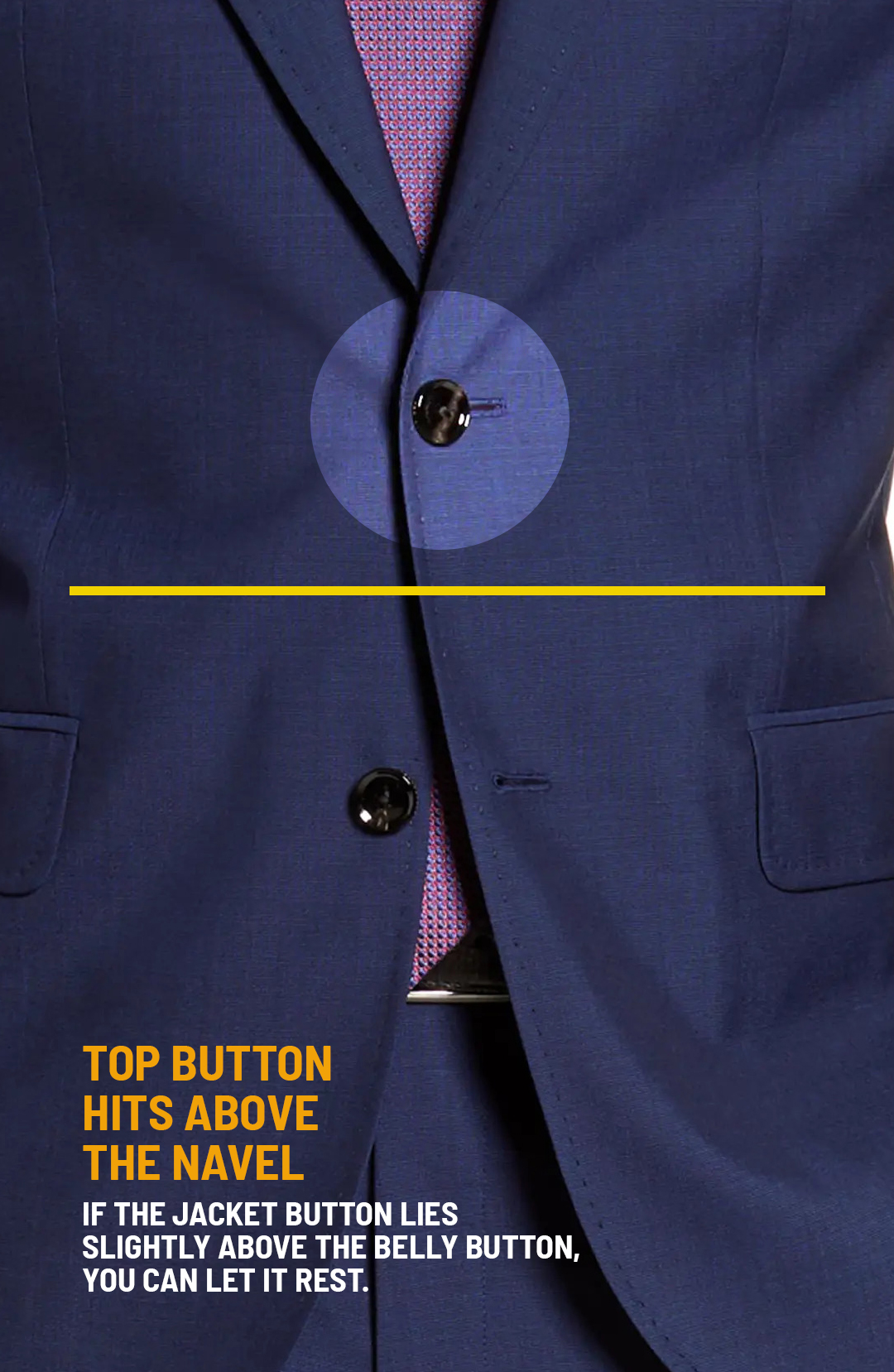
If the button is more than an inch off, the jacket is the wrong size.
A poorly placed button stance can indicate a poor fit or subpar construction.
By all means, avoid a suit jacket with a top button placed below your navel.

Are you wondering about the rules for a three-button suit? Use the middle button as your navel guide.
How the Suit Pants Should Fit
The fit of your suit pants is just as essential as it is for your jacket.
The goal is to create a uniform and overall stylish image.
When suiting up, every detail matters.
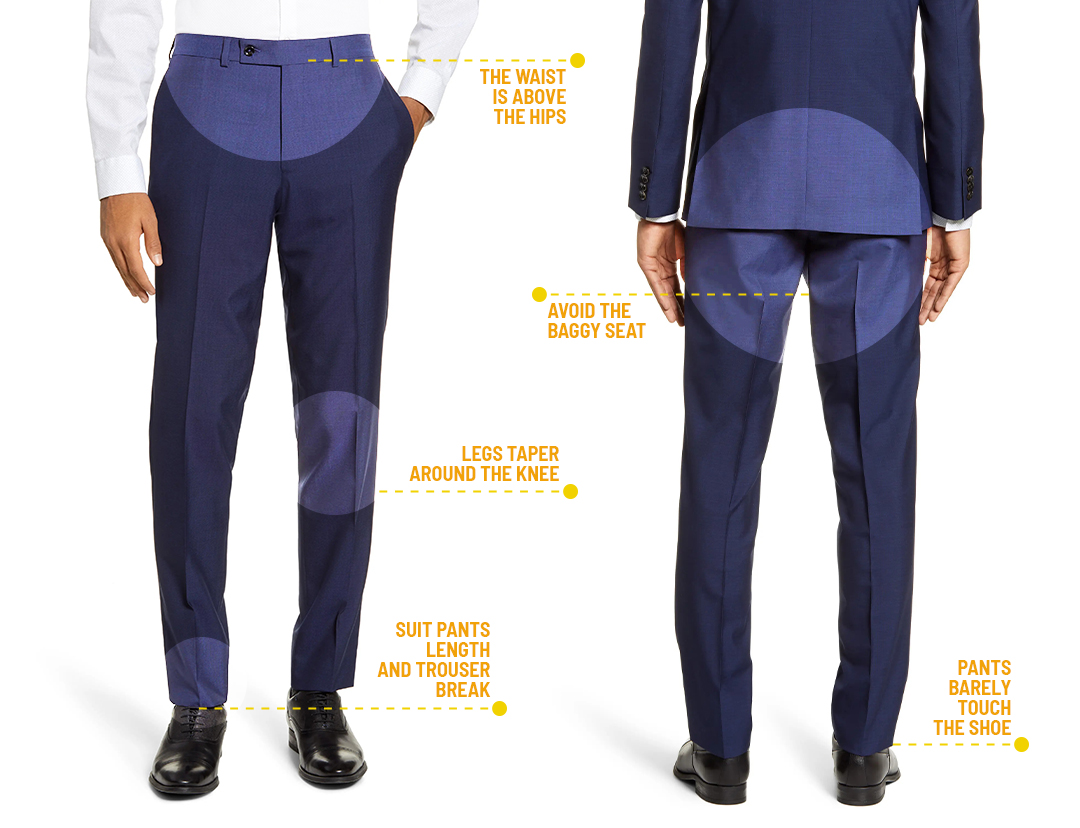
A good trouser fit is easier to get than for your suit jacket.
To get a good fit, focus on the length, waist, and seat of your pants.
Proper Pants’ Waist Above the Hips
The dress pants should gently rest right at the waist or just slightly above.
Ideally, you shouldn’t need a belt to help your pants stay in place.
A belt makes a good accessory, but you shouldn’t have to rely on one to hold up your dress pants.
If you notice that your zipper or where the pant legs meet creates a bump instead of a smooth drape, your pants are too low-sitting.

To ensure a good waist fit, slip two fingers under your waistband.
You’ll know your pants are too loose if you have extra space.
On the other hand, your pants are too tight if you struggle to fit your fingers in.
Avoid the Baggy Seat
The seat of your dress pants must have a very slightly snug, even drape.

When the seat of your pants doesn’t fit, it will be blatantly obvious.
The seat is too small if you can see the pants pulling and jamming themselves into uncomfortable nooks and crannies.
And you know you’ll feel that immediately. Ouch.
Conversely, if they’re too large, you’ll have a baggy seat, which looks very sloppy.
You’ll also feel how loose they are when you wear them.
Proper Leg Tapering Around the Knee
The shape of your pant legs will define your entire trousers.
The goal is to create a sleek, flattering shape that follows the natural line of your leg.

The fabric allowance in your pants should remain consistent from the waist until the knee area.
At that point, your pant leg should begin a slight taper until the ankle.
The final result is that your pants are narrower at the ankles than the rest of the leg.
This cut keeps suit pants in proper proportion with the entire leg.
It also ensures you see an appropriate ratio with your suit jacket.
Pants Barely Touch the Shoe
The trouser cuff must sweep across the top of your dress shoes.
Don’t allow your hem to pool around your ankle, but don’t let it end inches above it, either.
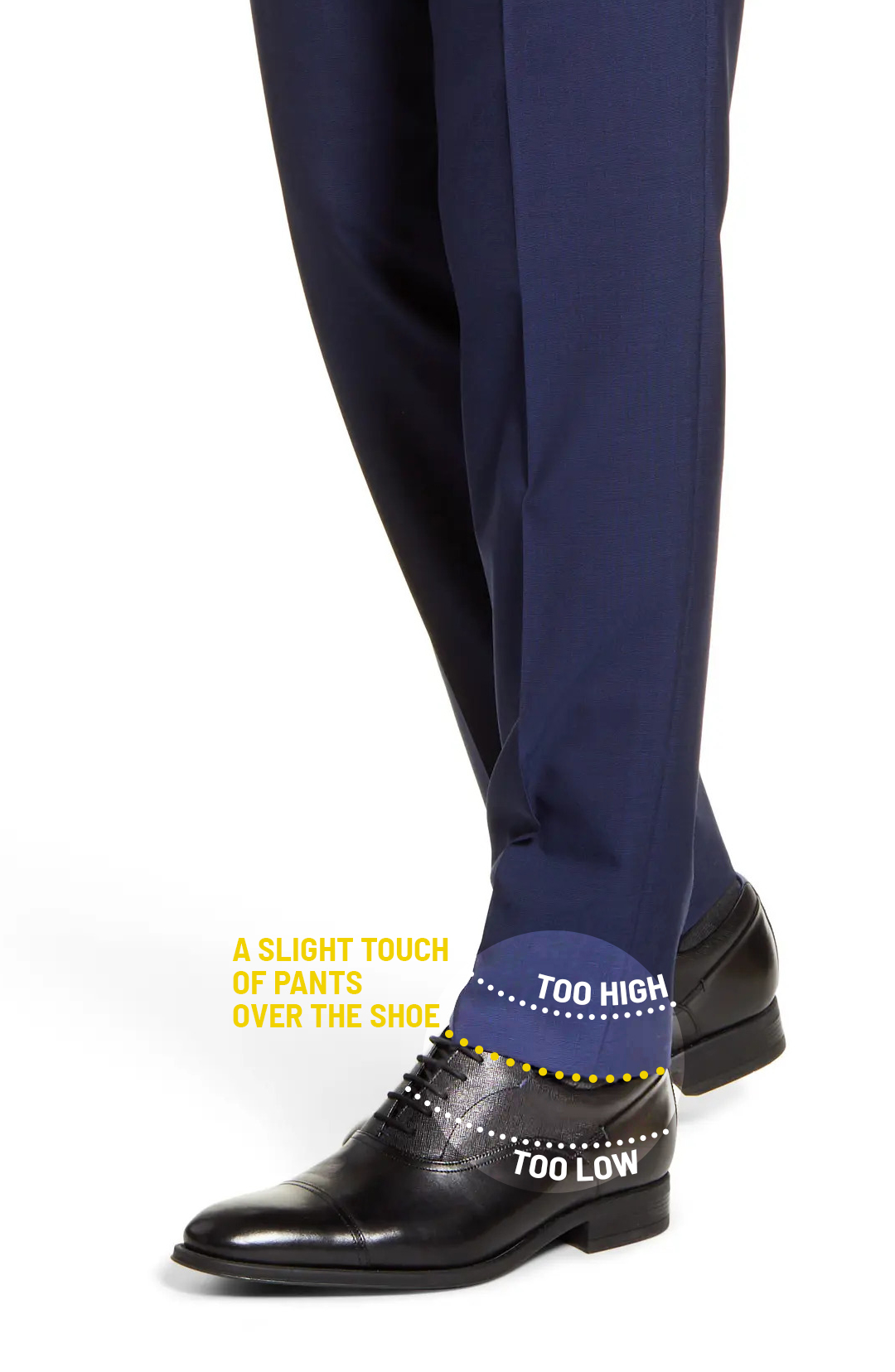
You can find the sweet spot with just a light brush of your hem across your shoe top.
When you have too much length on your pants, they may look comically large.
A tailor can easily shorten your suit pants for you.
Suit Pants Length and Trouser Break
The trousers’ break is the fold of fabric at the ankle, determined by the pant’s length.
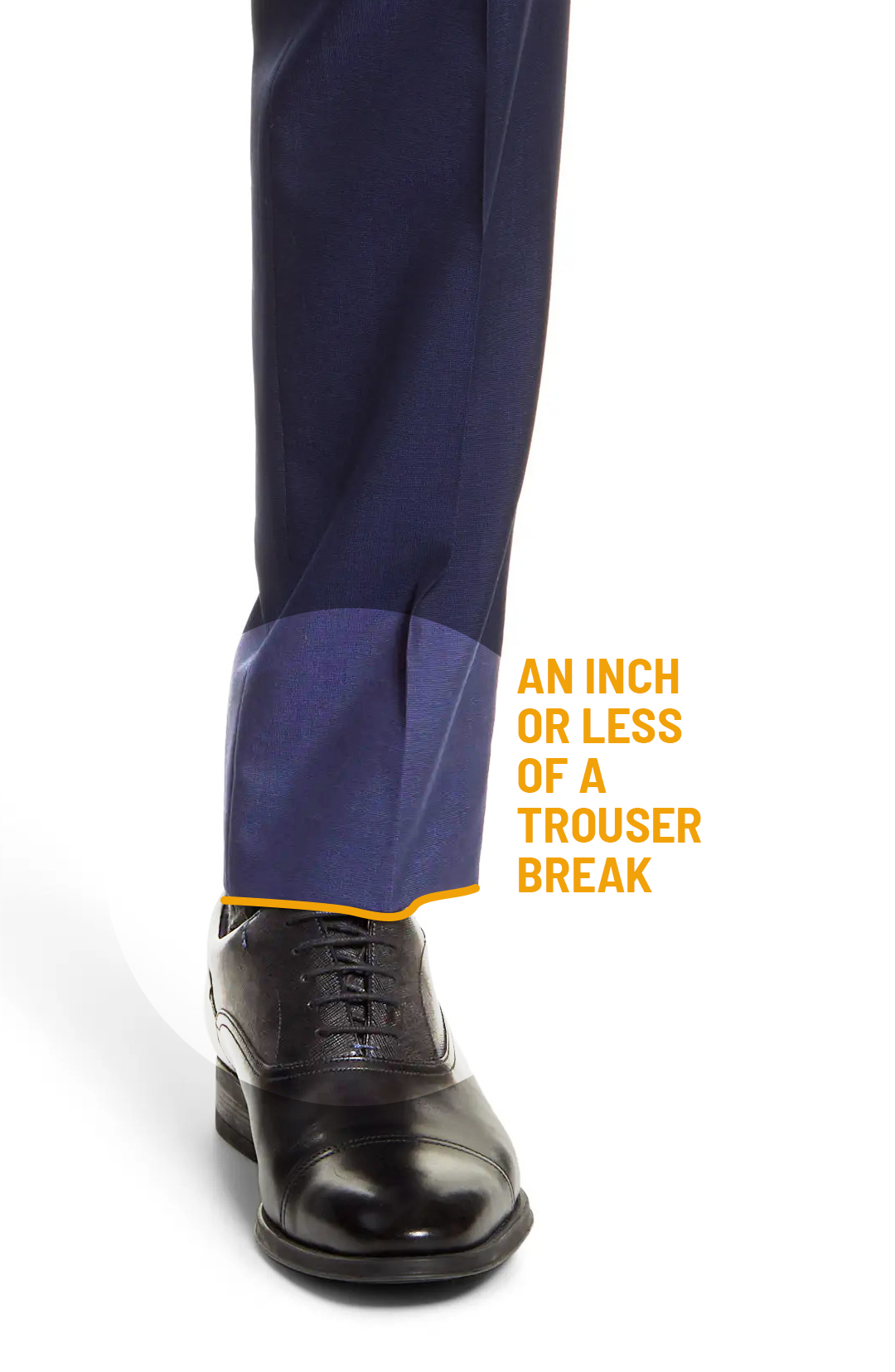
The general rule of thumb is to have an inch or less of a trouser break.
There are different levels of a pant breaks.
A full break is the longest length, creating the deepest crease.
Full breaks aren’t as trendy and common as they once were.

The most popular style today is the slight break, or the half-break, with some length and a shallow crease.
A partial break is a more modern style but is still traditional enough to be accepted in conservative settings.

Pants with no break are very contemporary and the most casual way to wear dress pants.
But be mindful. You will be showing a lot of ankles when you sit.

This allows you the chance to add a fun twist to your suit with cheeky or colorful socks.
Again, this look isn’t suitable for formal looks.
Other Things to Consider About the Suit Fit
A proper fit is critical, but other suit elements also contribute to a good suit.
If you don’t get the right width of lapel or wear the incorrect cut, it will be game over for your suit.
The Suit’s Lapel Width
A disproportionate suit lapel throws off the entire symmetry of your suit.
The suit’s lapel might seem insignificant, but it has a great influence on your style.

Your tie and lapel should be the same width.
Be sure to coordinate the two when making your match.

For a modern look, opt for a thin tie and lapel.
A wide lapel and tie give you a more classic, traditional appearance.
The Suit Fit and the Cut
You can have a suit in one of three different styles.

The classic suit fit is cut in the traditional manner your father wore.
It isn’t trendy, but it is traditional and a good choice for a conservative occasion.

Still, it’s an elegant and timeless suit.
A classic fit leaves a decent amount of room in the waist and chest for movement.
The slim-fit suit, often called European or Italian cut, is stylish and trendy.

Slim-fit suits give you a more fitted, tailored appearance. It is a popular choice for most men today.
The modern fit suit is the happy marriage of classic and slim fit suits.

Modern fit offers more movement than a slim-cut suit while providing more shaping than a classic fit.
Your fit is a personal choice, so you should know how you like your suit to feel.
Learning which cut looks best on your body shape is also important.
The Shirt Fit
It doesn’t matter that your jacket covers most of your dress shirt; the shirt fit also needs to be perfect.

If your shirt is baggy or too tight, it can throw off your perfectly balanced suit.
You can assess your shirt fit from its collar and shoulders, just as with your suit jacket.
Perfectly long shirt sleeves mean you should see your shirt cuff peeking from under your jacket sleeve.

Both the shirt collar and jacket collar need to align with each other, sitting right next to each other.
Your shirt must be long enough to tuck properly into the suit pants but not so long that you can see a bulge under your waistband.
Suit Vest Fit
A three-piece suit with a vest is very sophisticated and classy, but only when they fit perfectly.

The vest should fit perfectly around your torso without being too loose or constrictive.
Ensure the vest has a tapered waist and the front drapes smoothly across your chest.
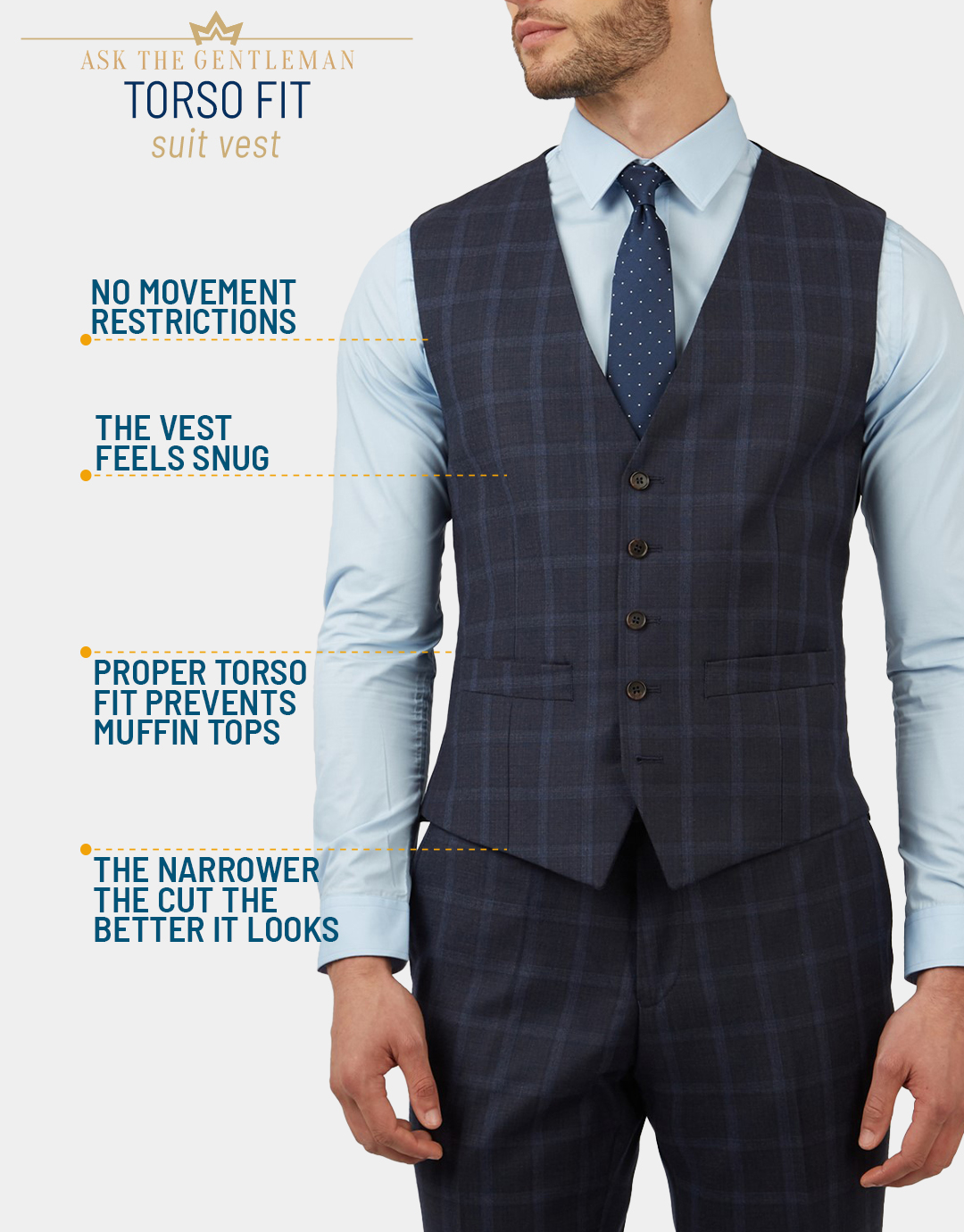
The vest length must be long enough that it covers your belt.
It should end approximately one inch past the waistband of your suit pants.





